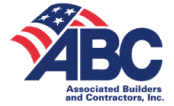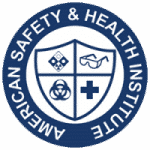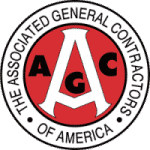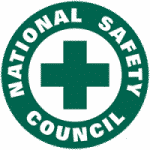VA, NC, MD & DC
(804) 355-7255
- Industrial Hygiene Services
- >
- Respiratory Protection Training
Respiratory Protection Training
While respirators are not always comfortable to wear, they are very necessary in many workplaces for protecting the health of workers. To ensure protection, the respirator must be selected, worn, and maintained properly. Respirator Protection training, through classroom and hands-on training, helps workers maximize the protective factor of the respirators they are required to wear.
All workers who wear a respirator must receive some level of training, even if they are wearing the respirator voluntarily. If an employee is required to wear a respirator, whether a filtering facepiece respirator like a N95 mask or a reusable cartridge respirator, they must receive respirator training and fit testing per the OSHA respirator standard, 1910.134.
Respiratory Protection was the third most frequently cited OSHA standard in 2022. The Respirator standard is very specific regarding training requirements because it is vital to protecting workers’ health and hence is an important part of a company’s Respiratory Protection Program.
How do I Know if Respirators are Required for my Jobsite?
To determine whether your jobsites require respirators, hazard assessments and IH sampling must be conducted. These results will determine whether respirators are necessary and, if so, which respirators are most appropriate to protect workers.
Circle Safety can perform hazard assessments and industrial hygiene exposure monitoring on your workers prior to Respirator Protection training. Exposure monitoring involves employees wearing sampling media, e.g., air sampling pumps with filters, for either an entire shift or during a task of interest. After we have performed IH sampling, you will be given a detailed report regarding your compliance with regulatory and best practice exposure limits. The report will also include guidance on how to reduce worker exposure including engineering controls, work practice controls, and/or PPE requirements and recommendations.
There are a wide range of respirators including air-purifying or supplied air with tight-fitting or loose-fitting face pieces. The type of respirator that is appropriate depends on the exposure of your workers as well as other factors including whether your employees have facial hair. Workers must have medical clearance to wear a respirator prior to fit testing. Only after understanding which contaminants workers are exposed to, and the capabilities and limitations of specific types of respirators, will you know which respirator is appropriate to select.
If respirators are determined to be necessary for your jobsites, you must provide Respiratory Protection training and fit testing for your workers prior to their use of the respirator and then annually thereafter.
Why is Respiratory Protection Training Important?
In addition to protecting the health of your workers, Respiratory Protection Training is important because it may be required for your jobsite. Workers trained in Respiratory Protection can help ensure that your company is OSHA compliant.
What Your Team Will Learn
- Why respirators are necessary
- How to fit and use a respirator
- Limitations and capabilities of a respirator
- How to inspect, put on, remove, and seal check the respirator
- Maintenance and storage procedures
- Medical conditions that may limit or prevent the use of a respirator
Benefits
- Protects the health and lives of your workers
- Ensures OSHA compliance
- Protects the reputation of your company
- Identifies potential safety hazards
- Peace of mind knowing that you are working with respiratory protection experts
In addition to the above, specific chemical hazard training may also be covered. This could include reviewing any exposure assessments conducted on the workers wearing respirators.
Respiratory Fit Testing is conducted after training. Each student will be fit tested with the same make, model, style, and size of respirator that they will be using on the jobsite. Prior to fit testing, medical clearance to wear a respirator is required. To determine which respirator is appropriate for your jobsites, hazard assessments and sampling may be conducted prior to training.
What Will You Get with Our Respiratory Protection Training?
Professional Class Materials
We provide each participant in the class with professionally-designed and easy-to-understand training materials written in clear and concise language—avoiding any complicated terminology that may cause confusion.
Highly Trained Instructors
Our instructors have extensive experience with respiratory protection and OSHA regulations. They will provide an informative and comprehensive training session to answer any questions attendees might have.
Flexible Classes
Our respiratory protection training classes can be conducted either at our facility or at your office/jobsite.

“Very impressed with their capabilities. Glad to find a local firm that can handle site-safety / industrial hygiene issues at a high level.”
– Major K.
Need Respiratory Protection Training?
If your workers are exposed to hazards that require respirators, Respirator Protection training is vital to protecting their health and staying in compliance with OSHA. If your company needs assistance with developing or reviewing a written respirator program, performing hazard assessments, IH monitoring, or training, allow our team of highly qualified safety and health professionals to help. To get started, please contact us at 804-355-7255.
Respiratory Protection Training FAQs
Do I need to recertify?
OSHA requires Respirator Protection Training to be conducted initially before assignment to work that requires the use of a respirator, and annually thereafter.
Retraining may also take place in the event of jobsite changes, respirator type changes, and/or when inadequacies in workers’ knowledge are observed.
How long does the Respiratory Protection Training last?
Respiratory Protection training lasts 30-60 minutes, depending on the types of respirators included in the training. Training time can also be affected by the range of exposure hazards to which workers are potentially exposed. Fit testing, often conducted right after training, takes approximately 15 minutes per person.
Where is the training conducted?
Training can be done at your location or at our training room centrally located in Richmond, Virginia.
Memberships & Associations







Footer #3 Widget
This is an example of a widget area that you can place text to describe a product or service. You can also use other WordPress widgets such as recent posts, recent comments, a tag cloud or more.
Footer #4 Widget
This is an example of a widget area that you can place text to describe a product or service. You can also use other WordPress widgets such as recent posts, recent comments, a tag cloud or more.
Circle Safety & Health Consultants © 2025 | Privacy Policy | Sitemap
